







Tatra is a Czech vehicle manufacturer in Kopřivnice. It is owned by the Tatra Trucks company, based in Ostrava, and is the third oldest company in the world producing cars with an unbroken history. The company was founded in 1850 as Ignatz Schustala & Comp., in 1890 renamed in German Nesselsdorfer Wagenbau-Fabriksgesellschaft when it became a wagon and carriage manufacturer. In 1897, Tatra produced the first motor car in central Europe, the Präsident automobile. In 1918, it changed its name to Kopřivnická vozovka a.s., and in 1919 changed from the Nesselsdorfer marque to the Tatra badge, named after the nearby Tatra Mountains on the Czechoslovak-Polish border (now on the Polish-Slovak border).

11/12

1923 11


1927 12

In 1921 the company was renamed to "Kopřivnická vozovka", and in 1919 the name Tatra was given to the car range. Leopold Pasching took over control and in 1921 Hans Ledwinka returned again to develop the revolutionary Tatra 11. The new car, launched in 1923 featured a rigid backbone tube with swinging semi-axles at the rear giving independent suspension. The engine, front-mounted, was an air-cooled two-cylinder unit of 1056 cc. In 1924 the company was renamed to "Závody Tatra".
The Tatra 11 was replaced in 1926 by the similar Tatra 12 which had four-wheel brakes. A further development was the 1926 Tatra 17 with a 1,930 cc water-cooled six-cylinder engine and fully independent suspension. In 1927 the company was renamed "Ringhoffer-Tatra".
20

1914-1926



Nesselsdorf (NW) type T was a luxury car. As the company changed its name the model was renamed to Tatra 20 in 1919. It was successor to the highly successful model NW type S. It was made at the same time as NW type U until 1925, when both of the models were replaced by Tatra 17. It is currently a vintage model, with only three examples known to exist. BMW owns one, while another is owned by a U.S. car collector.
The engine NW T was a four stroke OHC water cooled inline four. It had a capacity of 3563 cc, which gave an output of 45 PS. The first T20s had to be started manually while later T20s had Bosch electric starters. The same engine was also used in NW TL-2 and NW TL-4 trucks.
The car was gradually modernized - for instance, the manual starter was replaced by an electrical one, the gearstick was moved inside the car, front brakes were added, etcetera. It was sold mostly as a luxurious limousine, although other variants were also made, such as an ambulance and a racing version.
57

1932-1949 57

1935 57a

1938 57b

1941 57k kübelwagen
The Tatra 57 are a series of two-door compact cars, built by Czechoslovakian company Tatra from 1932. They are popularly known by the nickname "Hadimrška".
Tatra updated the model as the 57A in 1936, and as 57B in 1938. A military adaptation, the 57K, (for Kübelwagen) was introduced in 1941. Through 1945, more than 5,000 Tatra Kübelwagens were built. All versions have a characteristic Tatra backbone chassis, with the drive-shaft running encased in its central structural tube.
Tatra ended production of the 57K in 1947, and of the 57B in 1949. With that the company altogether withdrew from making compact cars; from 1948 its smallest model was the 2 litre Tatra 600.
The Tatra type 57, introduced in 1931, succeeded the Tatra 12. Styling continued the same streamlined, closed nose front as its predecessors – Type 11 and 12. It has a 1,155 cc overhead valve flat-four engine that produces 18 hp. Bodies offered included a four-seat saloon, four-seat convertible and two-seat convertible. All were two-door.
In 1935 Tatra replaced the Type 57 with the 57A – changing to a more conventional open front grille design. In 1938 Tatra replaced the Type 57A with the 57B. For the new model Tatra enlarged the engine to 1,256 cc and increased its power to 25 hp. In 1941, Tatra added the 57K Kübelwagen, which was a military four-door convertible for the German Wehrmacht in World War II.
80

1931-1935


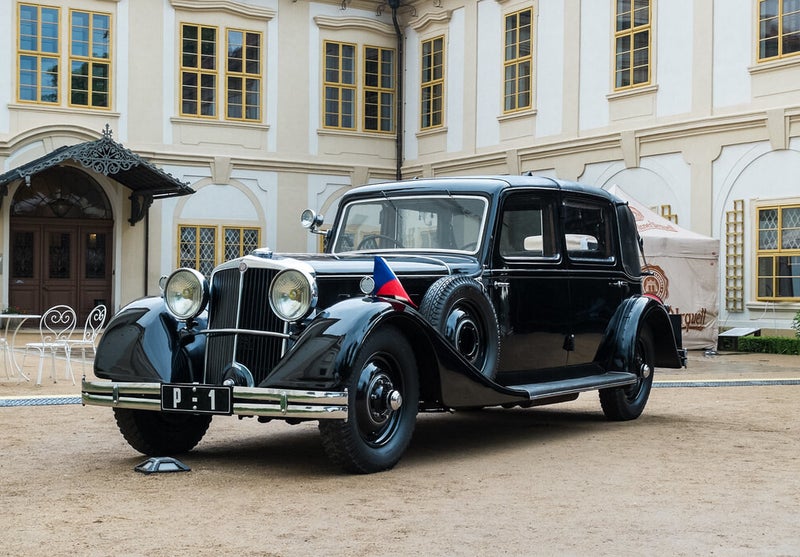
The Tatra 80 is a Czechoslovak luxury full-size car built by Tatra between 1931 and 1935. Hans Ledwinka designed the car in 1930. It was launched in 1931, the same year as the Tatra 70, and the two models have the same backbone chassis and swing axle suspension. The Type 70 was built with a 3,406 cc six-cylinder OHC engine, but the Type 80 was given a 5,990 cc, 65-degree V-12 sidevalve engine. The engine produces 120 hp giving the car a top speed of 130 kilometres per hour.
Tatra supplied the bare rolling chassis, engine and transmission. Customers chose a body style and which coachbuilding company would build it. Four-door sedans, cabriolets and six-seat limousines were built. There is at least one example of a two-door, four-seat convertible. Sodomka of Vysoké Mýto built bodies for several Type 80 cars.
The Type 80 was Tatra's most luxurious and expensive car. 22 Type 80 cars have been built between 1931 and 1935.

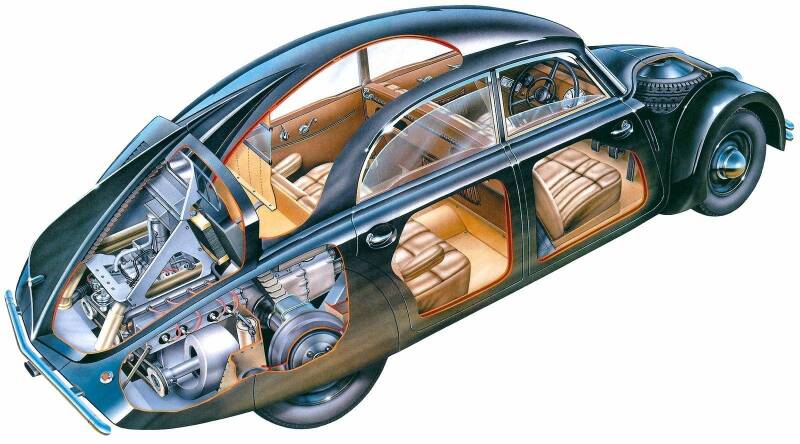
Tatra's specialty was luxury cars of a technically advanced nature, going from air-cooled flat-twins to fours and sixes, culminating (briefly) with the OHC 6-litre V12 in 1931. In the 1930s, under the supervision of Austrian engineer Hans Ledwinka, his son Erich and German engineer Erich Übelacker, and protected by high tariffs and absence of foreign assemblers, Tatra began building advanced, streamlined cars after obtaining licences from Paul Jaray, which started in 1934 with the large Tatra 77, the world's first production aerodynamic car. The average drag coefficient of a 1:5 model of the fastback Tatra 77 was recorded as 0.2455. It featured (as did almost all subsequent big Tatras) a rear-mounted, air-cooled V8 engine, which was in technical terms very sophisticated for the time..


1933 v570


1935 v1
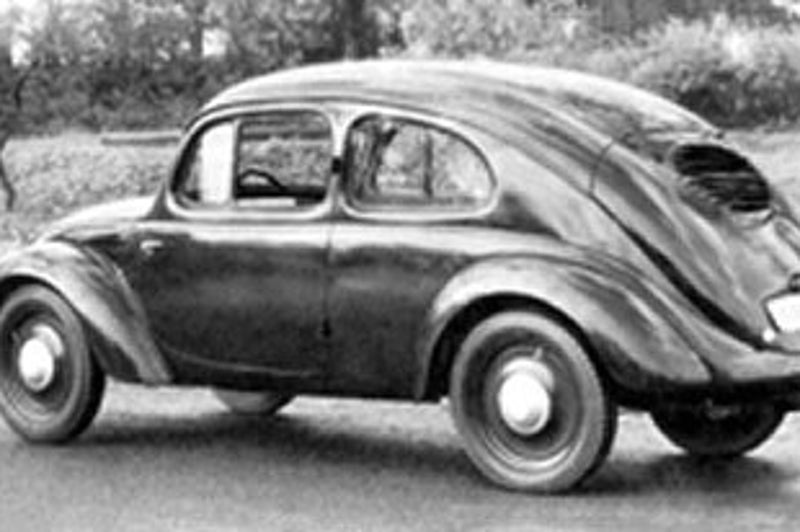
1936 v3
Both Adolf Hitler and Ferdinand Porsche were influenced by the Tatras. Hitler was a keen automotive enthusiast, and had ridden in Tatras during political tours of Czechoslovakia. He had also dined numerous times with Ledwinka. After one of these dinners Hitler remarked to Porsche, "This is the car for my roads". From 1933 onwards, Ledwinka and Porsche met regularly to discuss their designs, and Porsche admitted "Well, sometimes I looked over his shoulder and sometimes he looked over mine" while designing the Volkswagen. There is no doubt that the Beetle bore a striking resemblance to the Tatras, particularly the Tatra V570. The Tatra 97 of 1936 had a rear-located, rear-wheel drive, air-cooled four-cylinder boxer engine accommodating four passengers and providing luggage storage under the front bonnet and behind the rear seat. Another similarity between this Tatra and the Beetle is the central structural tunnel. Tatra launched a lawsuit against VW, but this was stopped when Germany invaded Czechoslovakia. At the same time, Tatra was forced to stop producing the T97. The matter was re-opened after World War II and in 1965 Volkswagen paid Tatra 1,000,000 DM in an out of court settlement.
However Tatra's works preceding Volkswagen are themselves preceded by designs of Hungarian automotive engineer Bela Barenyi, whose sketches resembling Volkswagen date back to the 1920s.
After the 1938 invasion of Czechoslovakia by Nazi Germany, Tatras were kept in production, largely because Germans liked the cars. Many German officers died in car accidents caused by driving the heavy, rear-engined Tatras faster around corners than they could handle. At the time, as an anecdote, Tatra became known as the 'Czech Secret Weapon' for the scores of officers who died behind the wheel; at one point official orders were issued forbidding German officers from driving Tatras.
Tatra was instrumental in the production of trucks and tank engines for the German war effort.
77

1934-1938



The Czechoslovakian Tatra 77 (T77) is by many considered to be the first serial-produced, truly aerodynamically-designed automobile. It was developed by Hans Ledwinka and Paul Jaray, the Zeppelin aerodynamic engineer. Launched in 1934, the Tatra 77 is a coach-built automobile, constructed on a platform chassis with a pressed box-section steel backbone rather than Tatra's trademark tubular chassis, and is powered by a 60 horsepower rear-mounted 2.97-litre air-cooled V8 engine, in later series increased to a 75 horsepower 3.4-litre engine. It possessed advanced engineering features, such as overhead valves, hemispherical combustion chambers, a dry sump, fully independent suspension, rear swing axles and extensive use of lightweight magnesium alloy for the engine, transmission, suspension and body. The average drag coefficient of a 1:5 model of Tatra 77 was recorded as 0.2455. The later model T77a has a top speed of over 150 km/h due to its advanced aerodynamic design which delivers an exceptionally low drag coefficient of 0.212, although some sources claim that this is the coefficient of a 1:5 scale model, not of the car itself.
The Tatra 77 was a hand-built car with a leather interior. Some cars had a glass partition between the front and rear seats. A sliding roof was available.
An unusual feature on a few of the T77 models was a central position for the steering wheel in the dashboard. The front-seat passengers were seated on either side of the driver and the seats placed slightly rearwards as in the modern-day McLaren F1. All other T77's had the steering wheel on the right-hand side as Czechoslovakia (like a number of other European countries) drove on the left before the Second World War.
87

1936-1950
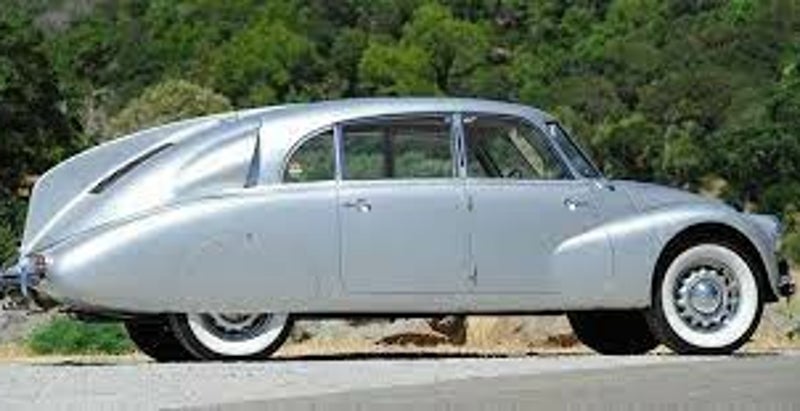

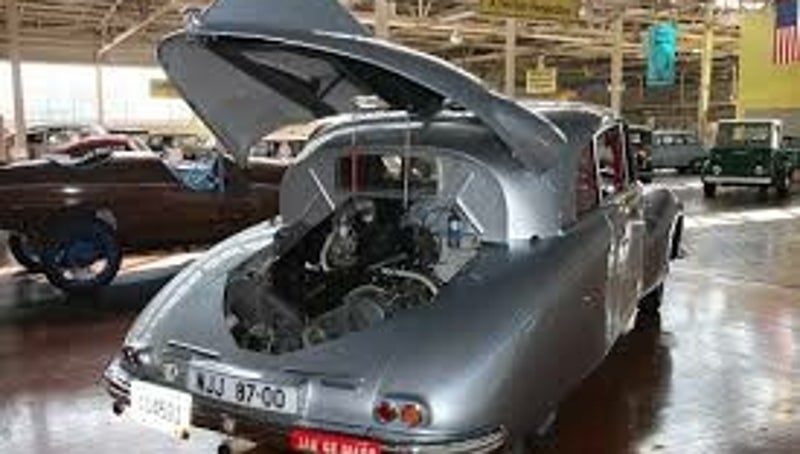
The Tatra 87 (T87) was a car built by Czechoslovak manufacturer Tatra. It was powered by a rear-mounted 2.9-litre air-cooled 90-degree overhead cam V8 engine that produced 85 horsepower and could drive the car at nearly 160 km/h. It is ranked among the fastest production cars of its time. Competing cars in this class, however, used engines with almost twice the displacement, and with fuel consumption of 20 liters per 100 km. Thanks to its aerodynamic shape, the Tatra 87 had a consumption of just 12.5 litres per 100 km. After the war between 1950 and 1953, T87s were fitted with more-modern 2.5-litre V8 T603 engines.
The 87 was used by Hanzelka and Zikmund for their travel through Africa and Latin America from 1947 to 1950. The Tatra 87 has unique bodywork. Its streamlined shape was designed by Hans Ledwinka and Erich Übelacker and was based on the Tatra 77, the first car designed with aerodynamics in mind. The body design was based on proposals submitted by Paul Jaray of Hungarian descent, who designed the famous German Graf Zeppelin dirigibles. A fin in the sloping rear of the Tatra helps to divide the air pressure on both sides of the car, a technique used later in aircraft. Tatra 87 had a drag coefficient of 0.36 as tested in the VW tunnel in 1979 as well as reading of 0.244 for a 1:5 model tested in 1941.
Many design elements of the Tatra 87, V570 and the later T97, were copied by later car manufacturers. Ferdinand Porsche was heavily influenced by the Tatra 87 and T97 and the flat-four-cylinder engine in his design of the Volkswagen Beetle, and was subsequently sued by Tatra.
97

1936-1939

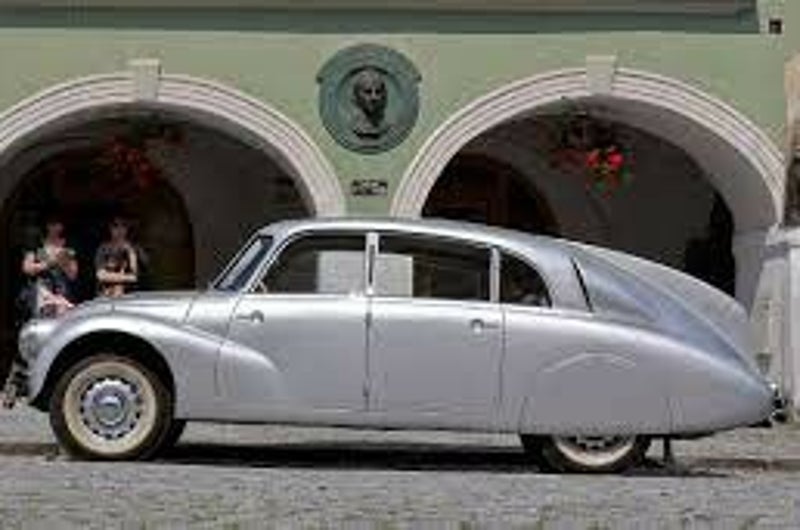

The Tatra 97 was designed to complement two full-size cars in the Tatra range: the Tatra 77 launched in 1934 and the Tatra 87 launched in 1936 along with the Type 97. Each of the three models has an air-cooled rear engine and share similar aerodynamic fastback four-door sedan bodies. But whereas types 77 and 87 each have a large V8 engine, Type 97 has a flat-four engine. The Type 97 is distinguished by having two headlights and a one-piece windscreen, whereas the 77 and 87 have three headlights and a three-piece windscreen. The Type 97's flat-four engine displaces 1,759 cc and produces 40 horsepower, giving it top speed of 130 km/h.
Tatra already had a mid-size car in the same class, the more conventional 1,688 cc Tatra 75 that it had launched in 1933. Tatra continued to produce the Type 75 alongside the futuristic Type 97. In fact production of the Type 75 outlived that of the Type 97 and continued until 1942.
Kopřivnice is in a part of northern Moravia that Nazi Germany annexed after the Munich Agreement in September 1938. Production of the Type 97 was terminated in 1939, possibly to avoid comparison with the KdF-Wagen (see below). Production of the Type 97 was 508 cars in total. In 1946 Tatra resumed car production, and replaced the Type 97 with the larger and more modern Tatra 600 "Tatraplan".

600 tatraplan

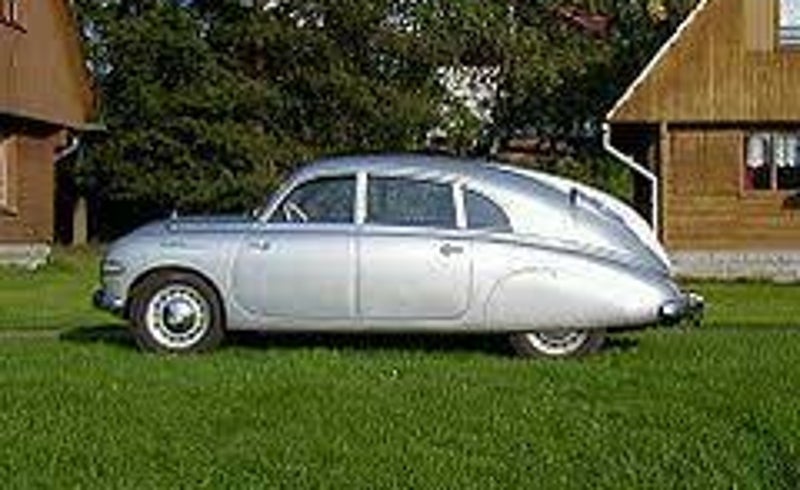
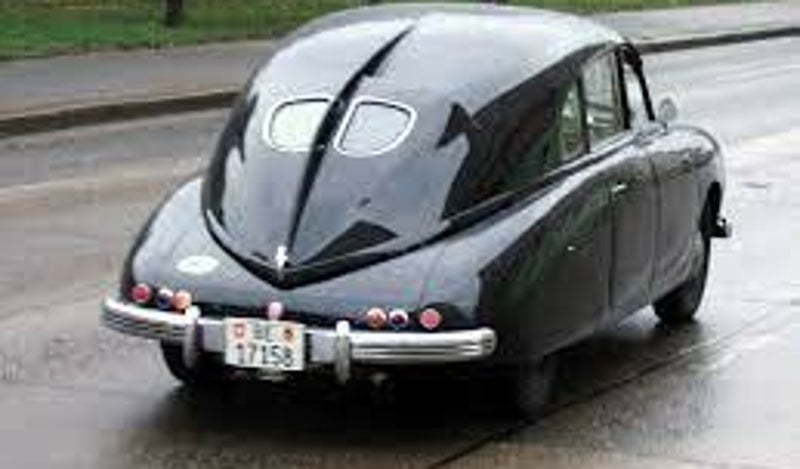

1948-1952
The Tatra 600, named the Tatraplan, was a rear-engined large family car (D-segment in Europe) produced from 1948 to 1952 by the Czech manufacturer Tatra. The first prototype was finished in 1946. The factory was nationalised in 1946 two years before the Communist takeover. Although production of pre-war models continued, a new model, the Tatra 600 Tatraplan was designed in 1946-47 by Josef Chalupa, Vladimír Popelář, František Kardaus and Hans Ledwinka. The name of the car celebrated the new Communist planned economy but also referred to aeroplane inspiration ('éroplan' means aeroplane in colloquial Czech).
After two prototypes "Ambrož" (December 1946) and "Josef" (March 1947), the 600 went into mass production in 1948. In 1951, the state planning department decided that the Tatraplan should henceforth be built at the Skoda Auto plant in Mladá Boleslav, leaving Tatra to concentrate on truck assembly. This was quite unpopular with the workforce at both plants: as a result Skoda built Tatraplans for one year only before the model was discontinued in 1952.
The Tatraplan had a monocoque streamlined 6-seat fastback saloon body with front suicide doors and a drag coefficient (Cd) of just 0.32. It was powered by an air-cooled flat-4-cylinder 1,952 cc rear-mounted engine. 6,342 were made, 2,100 of them in Mladá Boleslav. In 2010, in the UK, the Tatraplan won the 'Classic Car of the Year' competition in the 1940s category.
jk2500




1955 only 1 made
The JK 2500 was a prototype sports car using a Tatra engine, made in 1955. Construction and planning began in 1951. The car is named after the designer, Julius Kubinsky. The car was originally fitted with a 2500 cc Alfa-Romeo engine, but it was later replaced with an air-cooled Tatra V8 from Tatra T603. With the V8 the top speed was 207 km/h. It was used for 13 or 14 years by its designer, however, it has not been seen in several decades.
The Tatra JK2500 is the ninth car designed by Július Kubinský and it dates from 1951 - 1952. He had to postpone the project until 1955. At that time, he had completed it in his spare time and in his own garage.
The car was composed with spoke wheels and drum brakes from the Lancia Aurelia, a front axle from the German KdF car and the controls from the VW / Porsche. The beautiful body of the Tatra JK2500 is molded over a spatial frame and knocked by hand.
Július Kubinský drove this car for 13 years, but the production?
603

1956-1962



The Tatra 603 is a large rear-engined luxury car which was produced by the Czechoslovak company Tatra from 1956 to 1975. It was a continuation of the series of Tatra streamlined sedans which began with the Tatra 77. In Socialist Czechoslovakia, only high-ranking party officials and heads of factories were driven in 603s; the car was also exported to a number of other countries.
The Model T603 was allocated only to senior members of the political and industrial establishments. About a third of T603 production was exported to most of the central and eastern European countries allied to Czechoslovakia at the time, as well as to Cuba and China. Sales to private individuals were not normally possible, although a few T603s appear to have been privately owned in East Germany. During the car's twenty-year production run, 20,422 cars were built, mostly by hand. To the west of the Iron Curtain the car was mostly unknown, though some were used by Czechoslovak embassies in western capitals, and for a brief period some were exported to Canada and the USA, following on the success of the rear-engined VW Beetle. The model T603 was replaced by the T613 in 1974.
Former Cuban President Fidel Castro is believed still to have owned a white T603 featuring air conditioning.
Originally the Comecon issued a provision limiting Czechoslovakia to production of no more than 300 luxurious cars per year. Tatra was making more of them, though. This became an issue in 1957 and 1958, especially considering that East Germany produced its own luxurious car, the Sachsenring P240. The Comecon decided that the two countries must reach a deal to choose which country would continue production to supply the other. In 1958 the Ministries of Interior of both countries took part in trials, which East Germany's Minister of Machinery personally attended. The 603 won, and subsequently East Germany's higher communist officials were able to drive the T603, while the lower ones had to drive imports from USSR.
The V8 overhead valve hemi engine weighed only 180 kg, allowing the car to have 47/53 front/rear interaxle weight distribution when fully loaded. The engine was already used in the late Tatra 87 and its extreme reliability was confirmed by previous use in the Tatra 607 race car or military light truck T805. The air-cooling system was designed to cool the most heated parts of the engine more effectively.
605

1957



The Tatra 605 celebrated its sharp premiere in May 1957 at the Haná Circuit in Přerov. The development of the Tatra 605 was fast, it was established in 1956 and in the spring of the following year it was already at the start! As in the case of the T607 monopost, the purpose of which, in addition to participating in domestic car races, was mainly to check the serial T603 engine for the new passenger car from Kopřivnice (also marked T603).
The engine output reached up to 55 hp at 7,000 rpm, which was enough for a car with a low unladen weight of only 340 kg at a top speed of over 140 km / h ! The two-cylinder was placed in the middle in front of the driven rear axle and was followed by a four-speed transmission from the Aero Minor II passenger car , which had to have gear ratios adjusted for lower weight. The chassis formed a tubular frame of a lattice structure with independently suspended wheels, sprung by longitudinal torsion bars.
The steering wheel of the ridge steering and the driver's seat were on the left, because according to international regulations it was a two-seater sports car , which had to have a starter, dynamo and headlights, but it was also mandatory to drive a spare wheel.
603a

1962



In the summer of 1960, plans for a major modernization of the Tatra 603 began. The chassis and drivetrain were to remain unchanged, and the body was to be brand new. It looked like a slightly American-style sedan of the time, with a bow adorned with two pairs of circular headlights placed at the edges of the front of the body in oval blocks along with turn signals. The rounded roof of the cabin ended in a large, undivided window, followed by a stepped stern. The Tatra 603 A sedan, completed in 1962, was built on a prototype T 2-603 chassis platform.
Behind the rear axle was an air-cooled V8 engine with a capacity of 2472 cm 3 with OHV distribution and gave an output of 105 hp at 4800 min. The eight-cylinder was followed by a four-speed transmission controlled by a gear lever at the steering wheel.
In 1963, he passed demanding driving tests, including a comparison car with the Mercedes-Benz 220 SE. However, it soon became clear that serial production would not be achieved. Over time, it was bought by one of the test drivers, who used it in normal operation throughout the 1970s and early 1980s.
baghira

1970-1974


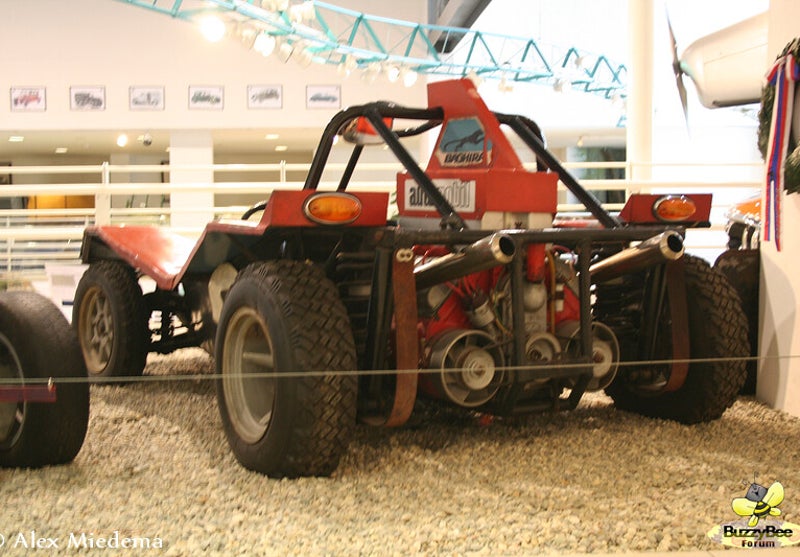
The Tatra Baghira was a dune buggy designed by Czechoslovakian designer, Václav Král in the 1970s, who also built the vehicle. The structure of the car was used in various vehicles, and aircraft parts. Chassis and body were built by Král aided by a team of industry enthusiasts. The first car was built in 1970. The name Baghira came from the name of the black panther in Rudyard Kipling's The Jungle Book.
613

1974-1996
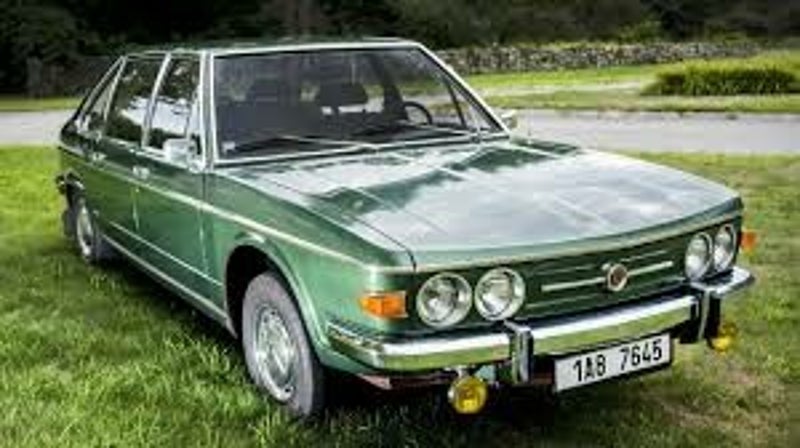

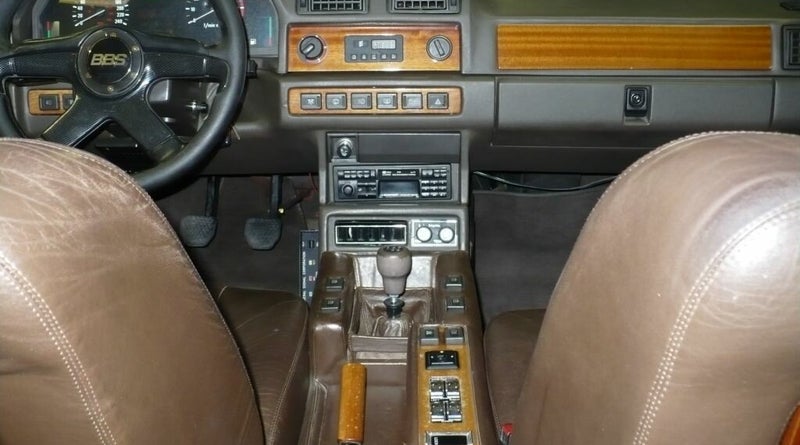
The Tatra 613 was a large luxury rear wheel driven car with rear mounted air-cooled engine manufactured by Czechoslovak manufacturer Tatra from the 1970s to the 1990s, as a replacement for the Tatra 603 series.
It featured an all-new body styled by Vignale of Italy back in 1968 and used a dohc air-cooled 3.5 litre V8 engine with 168 PS. Later injection versions reached 200 PS, with a maximum speed of 230 km/h. The design was updated a further five times until being replaced by the Tatra 700 in 1996, itself a restyled T613-5.
The Tatra 613 vehicles were mostly used by government officials, industry executives and in limited numbers, were also used as police cars and as the rapid response fire fighting and rescue vehicles during motorsport events. One of approximately 11,000 ever produced and 500 in its model year, this T613-3, which is finished in black with grey interior. It is a very rare car indeed. Its 3.5-liter air-cooled 165bhp V8 engine would make this a very fast and fun car to drive.

delfin




Formula Junior was initiated in 1957 by Giovanni Lurani, an Italian automotive engineer, racer driver and journalist . The racing cars used 1,1-litre engines. After seven years FIA took over the series and introduced them as Formula 3.
The Delfins were completed in 8 months and 18 days. Tatra presented them to public on September 20, 1963 on Štramberk Circuit. Tatra Delfin 1100 was the world’s first Formula Junior monoposto with an air-cooled engine. It was powered by a four-cylinder engine, which was derived from the Tatra 603’s eight-cylinder unit. It came equipped with two Weber 40 DCO3 carburetors. The car had Renault brakes, a Fiat 600 transmission with modified gears and Volga M21 differential. The 402-kilogram monoposto had a max speed of 217 km/h. The design of Delfin is still exceptional and attractive even today. The shape was really unusual for the Formula at the time. In 1963 all monopostos had neat, rounded shapes. This could be also an inspiration for other designers to design square shaped monoposto. Their era came later in 1969 when Lotus introduced its 61 MX.

What began life in the ’30s as the Liège-Rome-Liège Rally morphed into the Spa-Rome-Liège before the complexities of staging such an event – and trying to maintain high average speeds on public roads – ensured a change of ethos. In 1965 the event switched to the Nürburgring for what was essentially a regularity event. Competitors were obliged to drive around the full 17.6-mile circuit encompassing both the Nord and the Südschleife with a maximum time limit specified for each car and for each lap related to displacement and seating capacity. There were, however, harsh penalties should you screw up your bogey time. Oh, and the event ran for 84 hours.
603-2 in b5 marathon edition

1967



It is powered by V8 engine producing 170BHP cooled by air with help of those 2 big barrels on the rear of the car (ejector cooling). This car was used mostly for endurance racing and was developed secretly by Tatra engineers in their free time. But those endurace races were nothing like the endurance races we know nowadays, this car took part in "Marathon de la Route" competetion at the famous Nordchleife, maybe some oldtimers will know, but this race lasted 3 days with strict rules about average speed! And this old beauty was very succesfull in it, won it's category couple of times. It is not pure race car, it is basically civilian car with just slightly fastened suspension and improved engine, but it can still do almost 200kph on the straights.
625

1986

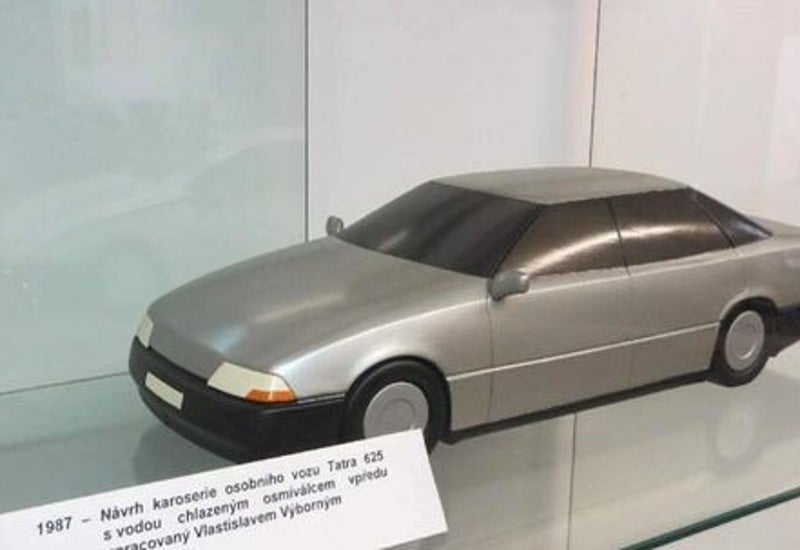

The Tatra 625 is the prototype of a two-seater coupé from Tatra . It was built in 1986 and can be considered the successor to the prototype JK 2500 .
The Tatra 625 had the air-cooled rear-mounted 3.5-liter V8 engine of the Tatra 613 . The street sports car was the forerunner of the Tatra MTX V8 launched five years later . According to Tatra, the vehicle should fill a gap between the Škoda Favorit and the Tatra 613.
Already in the early eighties, the designers of the Czech Tatras worked on the successor to the T613 limousine. For the brand itself, it was meant to be a revolution. The new model included a water-cooled engine at the front, both-axle drive and a modern design. However, the development ended in a drawer before the first prototype was created.
mtx tatra v8
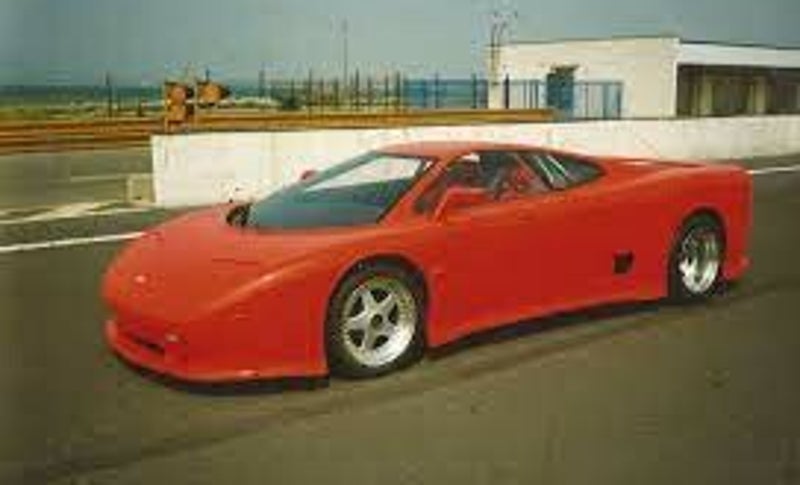
1992
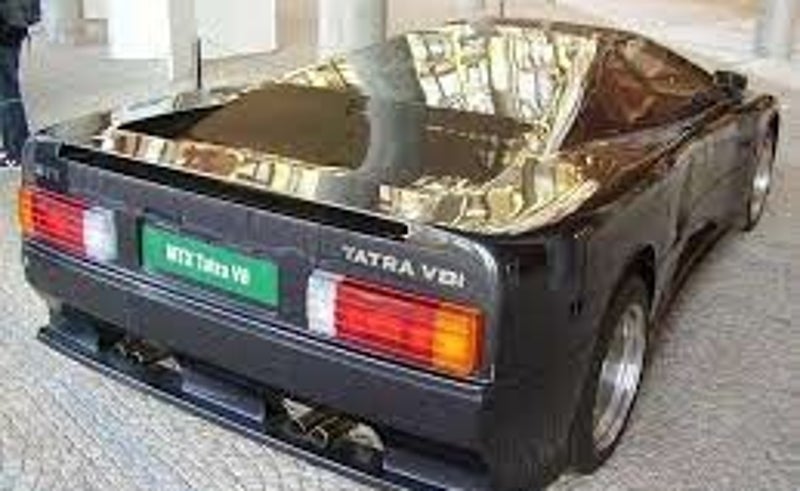

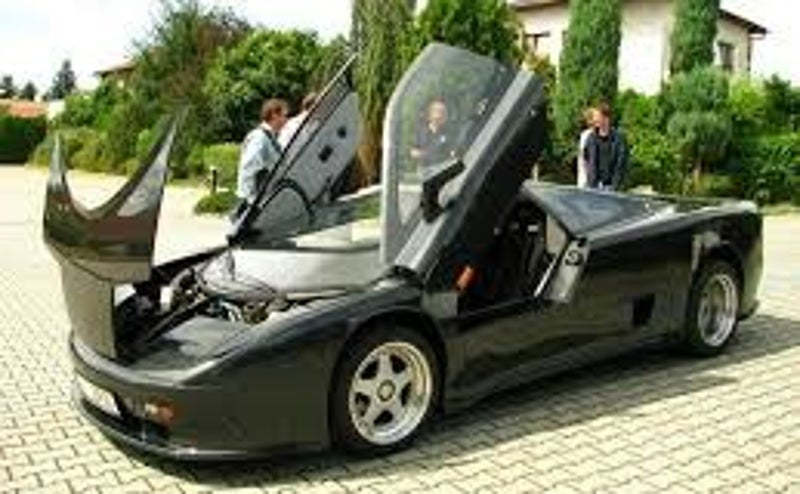
The MTX Tatra V8 was a super-sports car produced by MTX in cooperation with Tatra in 1991. It was designed by Czech automobile designer Václav Král and was the fastest Czech car of that time. It has a Tatra 3.9 litre V8 with a rated power of 306 PS at 6500 rpm, it has scissor doors opening vertically and pop-up headlamps. Acceleration from 0 to 100 km/h is given as 5.6 seconds and the maximum speed is 265 km/h.
After it passed driving tests at the Tatra polygon races at Kopřivnice, at the airport in Mošnov and at the autodrom in Most, it was finally introduced to the public in October 1991 at the auto show in Prague. After that, MTX received almost 200 orders for the car, so the company started production of a limited series of 100 units. When the project was sold to a new owner during the early stages of production, the factory suffered a fire that forever terminated volume manufacturing of the car.
Only four Tatra MTX V8s were ever built; a red and a white one that have Czech private owners, a black one that is exhibited in the Sports Car Museum in Lány, and a fourth was reportedly delivered as a kit to the United States. In 2010 the car appeared in the Kanye West film Runaway, which was recorded in Prague, Czech Republic.
700

1996-1999
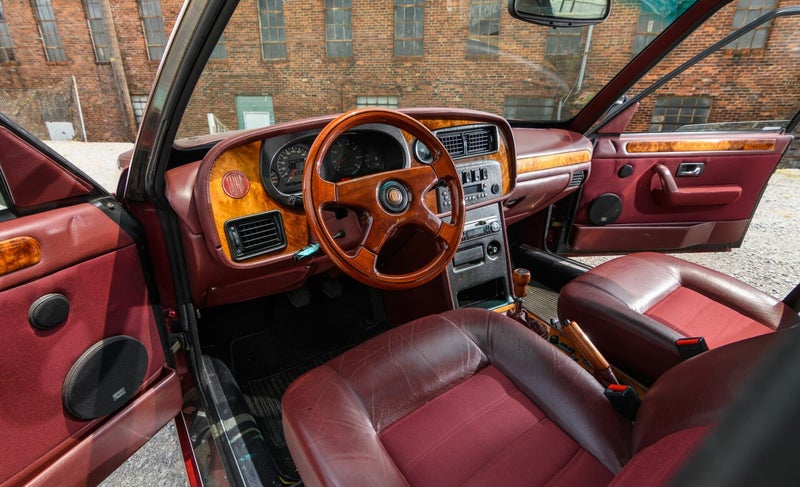


The Tatra 700 was a large luxury car released in 1996 by Tatra. Essentially a heavily restyled version of the Tatra 613 model it replaced, with updated body panels and detailing. The T700 was offered as both a saloon and coupé with either a 3.5 or 4.4 litre 90° air-cooled V8 petrol engine. The model was neither successful nor produced in large numbers, having produced a total of 69-72 cars. The T700 was the last passenger car made by Tatra with production halting in 1999. At this point, Tatra abandoned automobile manufacturing in order to concentrate on truck design and manufacture.
Compared to the innovative, thoroughly unconventional engineering Tatra explored in its early years, the T700 feels a step closer to normal. It has the long and narrow proportions of a 1980s Mercedes-Benz S-Class; the smooth-nose look makes more sense here than it did on the no-grille American sedans of the '80s and '90s. The generous wheelbase, with the back doors ending several inches ahead of the rear wheels, gives the car a ponderous side profile, but the most modern Tatra passenger car has none of the Soviet sci-fi foreboding of its 1960s comrades.

scrap book
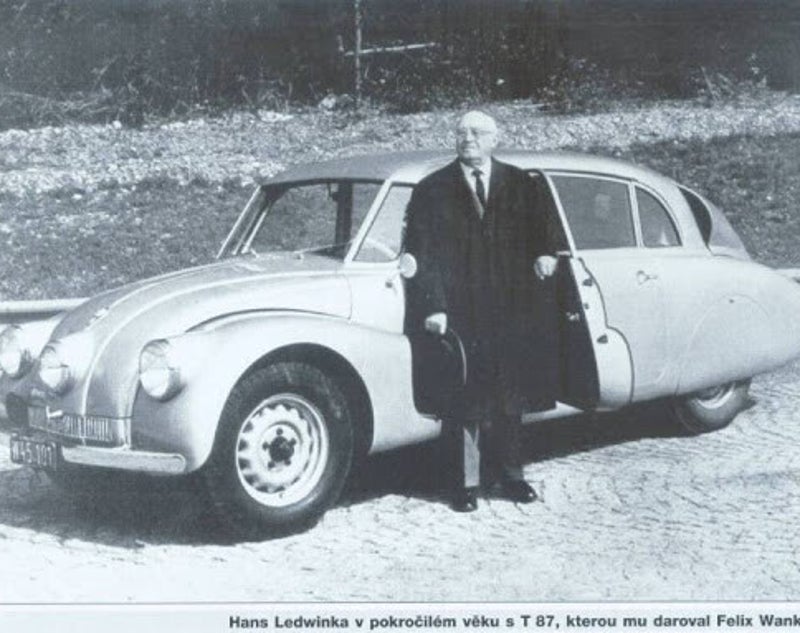






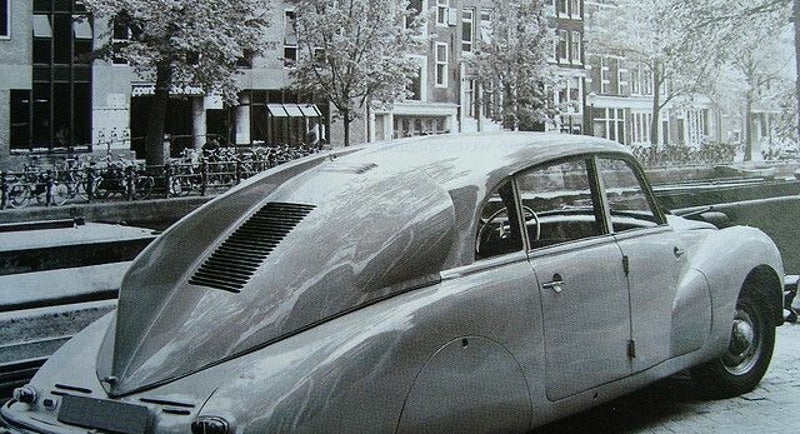


607 monopost




Tatraplan F1 - Tatra 607 monopost V8
In the t602 first race, the 1950 Czechoslovak Grand Prix, Sojka finished second behind Václav Hovorka on Maserati, but only few weeks later Sojka won on the new circuit in Šternberk that replaced the popular Ecce Homo hillclimb, and another car was produced with larger engine at 2350 ccm. Sadly, the very next year Sojka would be killed during practice for the same race (behind the wheel of T602) resulting in Tatra’s withdrawal. At the same time, due to the emerging Cold War and raise of the Iron Curtain, Tatra was unable to compete on a truly international stage and its only occasional foreign competition would be the East-German EMW cars built at the original BMW factory in Eisenach, which was nationalized by GDR.
In 1953 an upgraded version T607-2 was introduced and the engine capacity rose to 2545 ccm. In October Veřmiřovský used this car to set Czechoslovak seed record at 207.972 km/h.
Czech manufacturer Tatra created the 607 monoposto racing car in 1950 recovering a forgotten concept from 30’s: the rear-mid-engine design. After this little parenthesis there wasn’t any rear-mid-engine car until 1959.
This car was fitted with a singular and unique engine cooling system design never seen before and even nowadays: An air-cooled engine, forced convection by ejector exhaust nozzles system that is considered one of the most innovative invention in terms of engine in history of motorsport.
For 1954 the engine capacity was adjusted to 2472 ccm, which led some to believe that Tatra might after all be planning to enter the Formula 1 World Championship, newly opened to 2.50 liter cars. Obviously, the T607-2 Monopost would not trouble the Mercedes-Benz Silver Arrows very much, but it was somewhat comparable to the Gordini cars that have achieved a handful of top five finishes during the season.
According to Tatra historian Karel Rosenkranz, no official documentation indicating an intention to enter any World Championship races exists in Tatra’s archives. So it seems that the prospect of Tatra cars racing in Formula 1 was never anything more than pure speculation. Tatra has scrapped the single-seater racing programme after the 1958 season, sending the Monopost fleet to its Technical Museum in Kopřivnice, where one of them still could be seen today.

aircrafts



The Ringhoffer-Tatra Works ltd. produced several aircraft and aero-engines in the 1930s and 1940s before annexation by Germany, and after under the orders of the RLM. Among the aircraft produced were the following.
- Tatra T.126 (Avro 626 Avian)
- Tatra T.131 (Bücker Bü 131 Jungmann)
The Tatra T.101 is a two-seat monoplane general aviation aircraft that was built in 1937 by Tatra. Only one aircraft was built, but it set several records in the hands of Jan Ambruš. In 2008 a replica aircraft was constructed by brothers Ivo and Jiří Sklenář. It first flew in October 2009.
Tatra started making aircraft in 1935, building the Avro 626 Avian and Bücker Bü 131 Jungmann under licence. In 1937 the Tatra T.001 was the first aircraft designed and built by Tatra. The T.101 was a development of that aircraft, with an increased wingspan and a larger empennage than the T.001.
Only one aircraft was built by Tatra, msn 01. It was registered OK-TAO.
The Tatra T.101 gained a number of records. In 1937 a prize was offered for the longest flight by an aircraft of Czechoslovakian origin. In 1938 Jan Ambruš and Vojtěch Matěna flew from Ruzyně Airport, Prague to Khartoum Airport, Sudan, a distance of 2,340 nautical miles (4,330 km). The aircraft achieved a height record of 7,113 metres in the category for two-seat aircraft with an engine capacity of less than 4 litres. This was later raised to 7,470 metres.
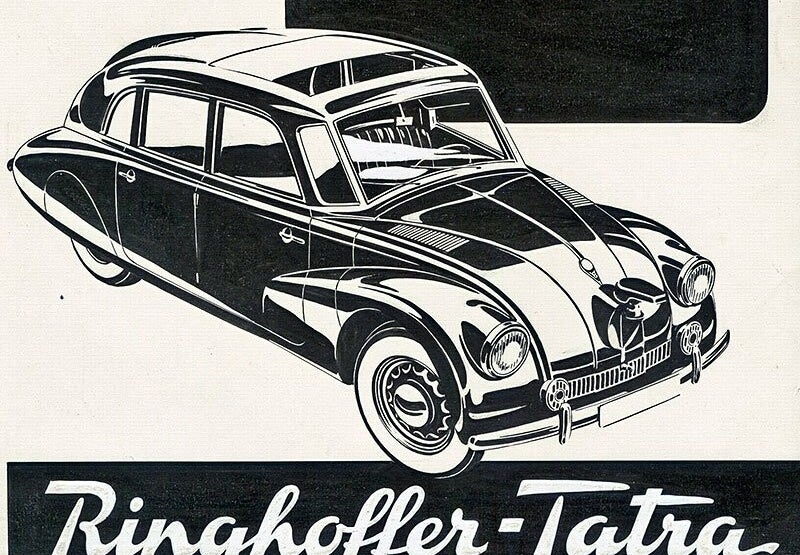




www.tatraworld.nl








Create Your Own Website With JouwWeb